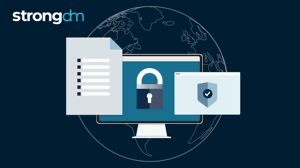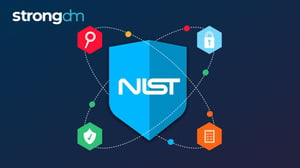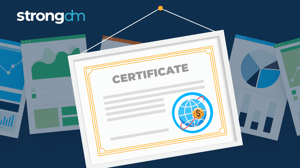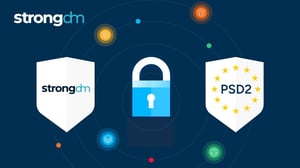

- Role-based, attribute-based, & just-in-time access to infrastructure
- Connect any person or service to any infrastructure, anywhere
- Logging like you've never seen
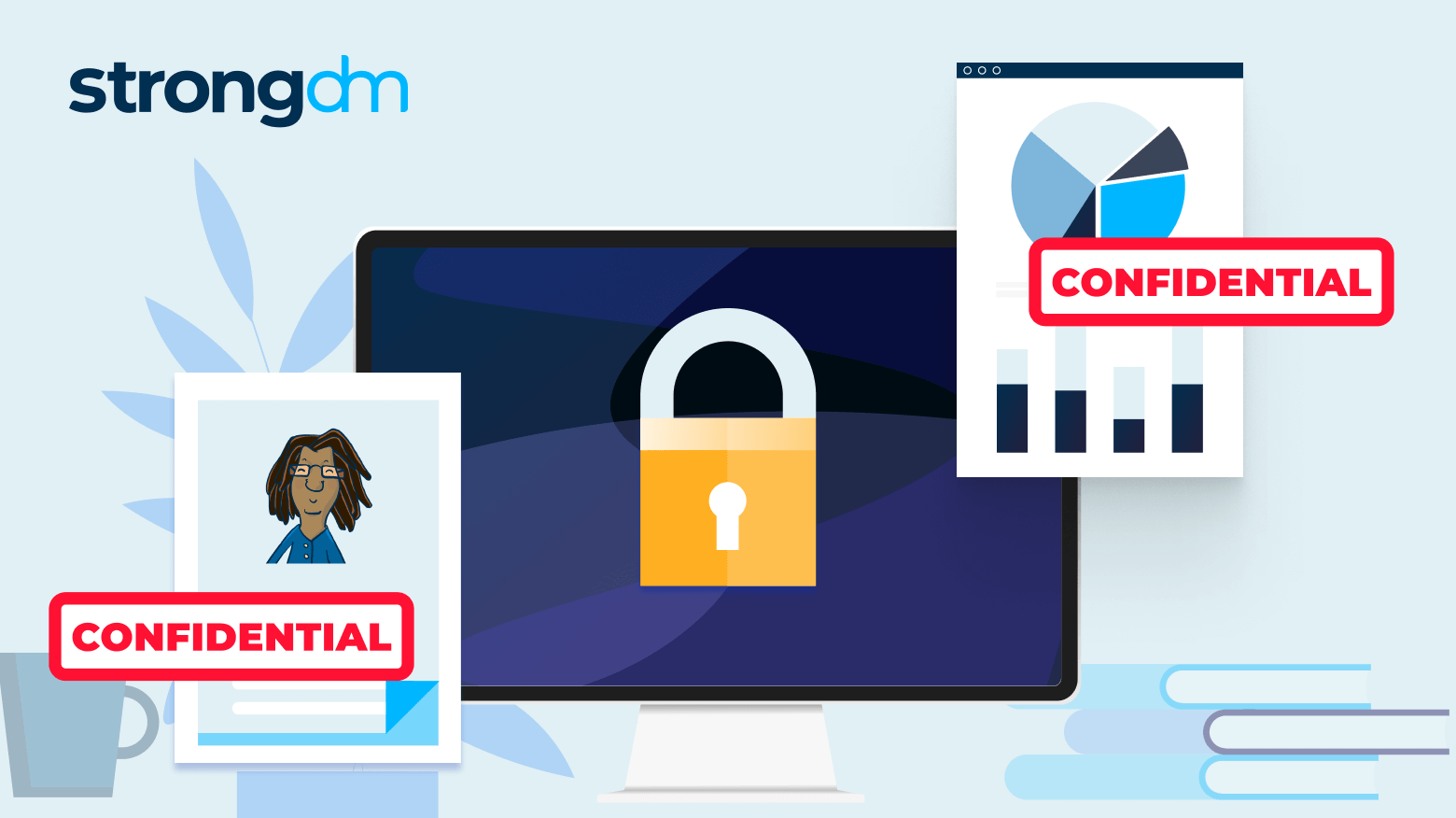
Data loss prevention (DLP) can save organizations millions of dollars on data breaches every year. In this article, we will take a look at data loss prevention best practices and discover how DLP tools and processes strengthen an enterprise’s security posture. You’ll learn about the different types of DLP, and the challenges enterprises face when managing data protection. By the end of this article, you’ll have a better understanding of how to use DLP tools and practices to prevent data breaches, improve data visibility, and protect intellectual property.
What is Data Loss Prevention?
Data Loss Prevention (DLP) is a series of tools and practices that help companies recognize and prevent data exposure by controlling the flow of information within and outside of the organization.
Protecting against data loss is a top priority for IT leaders, especially as remote work becomes an increasingly popular and viable option. In 2021, 73% of organizations said preventing data loss and exfiltration is becoming increasingly important to them as cyberattacks become more costly and damaging than ever before. But how can DLP help reduce your company’s risk of a breach?
By monitoring and reducing how data is transferred, companies can successfully comply with regulatory requirements and lower the risk of sensitive data being destroyed, exfiltrated, or accessed without permission.
How Does DLP work?
In a modern business environment, many people may need access to your company’s data to perform their work. However, allowing more access means your data is at a higher risk of exposure due to negligent or malicious user behavior. A DLP plan provides more visibility into your data—including who accesses your sensitive data when they access it, and how they use it—to offer better information control and reduce data loss.
A data loss prevention policy works by defining rules to identify sensitive data at every entry and exit point across an organization’s IT infrastructure. The rule-based content review helps teams track sensitive data across the organization, while contextual analysis allows the DLP software to tag data, understand appropriate usage, and recognize abnormalities. When sensitive data is discovered at an exit point, DLP software detects irregular activity, blocks the transfer, and alerts the user.
Some rules in DLP information security policies are designed to help companies meet compliance requirements and reporting needs, ensuring data is stored properly and encrypted for security. Other rules and security policies are designed to control risky behavior, like prohibiting the use of USB devices or defining which devices can be used to access certain systems. All of these rules serve to automatically identify suspicious behavior and block potential malicious activity from insider threats and external cyber attackers.
Protecting Data in Different States
IT professionals need tracking capabilities to see how data is used so that potential attacks can be monitored as they happen. A recent study reports that 31% of IT professionals attribute cyberattacks to a lack of oversight and controls to manage cybersecurity. Applying controls and rules to simplify monitoring your data while it is being used is essential to keeping your organization safe.
Effective DLP rules must monitor data across three states: when it’s in transit across your IT infrastructure, when it’s in use, and when it’s stored in a file or database.
- Data in motion (or in transit): when data is transferred from one location to another. Data in motion—both within your IT infrastructure and outside of it—can pose a substantial data exposure risk.
- Data in use: when data is actively being used for legitimate business purposes, whether it’s accessed or modified by a user or read or processed by a system. DLP tracking monitors when data is used and how it’s changed during use.
- Data at rest: when data is stored on servers, databases, or hardware and is infrequently used, accessed, or modified.
Maintaining data privacy and SOC 2 compliance standards requires reporting on data at rest and in motion, which means many companies need a comprehensive view of their data across the entire IT infrastructure to avoid hefty fines. Meanwhile, tracking data in use offers more insight into malicious and risky behavior happening within an organization. Companies often need multiple DLP solutions to provide monitoring and data encryption across the full scope of a company’s IT infrastructure.
4 Primary Types of Data Loss Prevention

DLP functionality leverages data matching—that is, comparing real-time data records to previously recorded and classified records—to monitor data in each of the three data states and to prevent unauthorized access, malicious breaches, and accidental data leakage.
There are four primary data loss prevention types that enterprises can use to achieve full data visibility. The rules and context for one system don’t always apply to others, so having multiple integrated tools allows security teams to mitigate data exposure across various attack vectors. Together, these four types of DLP make up the essential DLP components every strategy should have.
Network DLP
Modern businesses constantly exchange data with outside sources—creating a wealth of opportunities for data breaches. Data in motion can be protected by monitoring network traffic across every point in the corporate network so that instances where sensitive data might leave the network, can be flagged or blocked. Creating rules around data transfers protects your company’s network by ensuring that sensitive data stays safely within the network and keeping hazardous files out of the network.
Endpoint DLP
Endpoint management mitigates risky and suspicious user activity by monitoring all devices and workstations on the network or offline. Even potentially innocuous actions like printing documents or renaming files can present opportunities for insider threats to leak or exfiltrate data. Also, as remote work becomes the norm for many employees, companies can use DLP to facilitate Bring Your Own Device (BYOD) policies. Whether accidental or intentional, stopping these suspicious actions early can prevent unauthorized users from gaining access to sensitive data and intellectual property.
Cloud DLP
Cloud storage presents companies with new challenges to manage and secure their data. In 2021, 98% of businesses had one or more cloud data breaches in the previous 18 months, and 63% of those companies unintentionally exposed sensitive data during that time. Organizations need dedicated tools to identify data leaks in multi-cloud environments quickly to prevent far-reaching consequences. Cloud DLP tools can help enterprises adopt a Secure Access Service Edge (SASE) security architecture model, manage access more effectively, and gain better visibility of their data stored in the cloud.
Considering 83% of cloud breaches in 2021 were access-related, it’s critical that organizations track data in use to prevent unauthorized access. These tools can also reveal misconfigured or non-secure cloud environments by flagging abnormal data transfers.
Email DLP
Email poses a significant risk to data protection, both through inbound phishing attacks and risky outbound emailing practices. Email monitoring with DLP tools helps companies avoid some of the most common threats to cybersecurity, like insider threats maliciously emailing sensitive data outside the company, ransomware attacks through phishing, and accidentally emailing sensitive data to the wrong person. By monitoring email habits with automated tools, security teams can detect potential data exposure incidents quickly and lessen the risk of social engineering attacks.
Data Loss Prevention Best Practices
No matter what tools your organization uses, avoiding data loss starts with a few key practices.
Before companies can reduce the risk of data loss, they must understand what sensitive data they have and where it’s located to properly protect it. Identifying and classifying data are critical first steps to managing your company’s data.
Once identified, companies can then tag the data to ensure it abides by relevant compliance standards. These tags help DLP tools flag and block potential security risks automatically, saving security teams time and resources.
Lastly, define roles and responsibilities to protect data more effectively. Assign dedicated team members to mitigate risk across specific attack vectors or data types while others manage security tasks like patching. Use role-based access control to ensure that only authorized users can access sensitive data — and ensure that the data is encrypted to reduce exposure if it’s accessed by unauthorized identities. Auditing access regularly keeps your sensitive data secure and beyond the reach of unauthorized users.
Gaps with DLP Tools
While a DLP strategy can make a big difference for many companies, DLP tools are often not robust enough to be used independent of other cybersecurity tools. To deliver on the full promise of data loss prevention control, data must be secured at the endpoint to prevent data loss during a cyberattack. While DLP tools may flag or block data movement, they do not effectively secure data. These tools also do not provide the auditability necessary to simplify compliance reporting.
In addition, as DLP is dictated by a rule-based schema, IT teams must predict relevant rules preemptively to protect data. That means your DLP strategy is only as strong as your team’s experience: if your team cannot anticipate a use case, your sensitive data could be exfiltrated in unexpected ways. As cyberattacks become more sophisticated, DLP alone does not provide the extensive protection modern companies need to secure their data.
Challenges in Data Protection
Alongside common DLP gaps, companies often experience productivity challenges after implementing DLP. Since DLP is rules-based, certain policies can make collaboration both internally and with external vendors more challenging. Often, when these policies make day-to-day work less conducive to collaboration, employees find workarounds to exchange data and improve productivity, ultimately perpetuating the risky behaviors DLP aims to reduce.
Since DLP programs are designed to block potential attacks, it is also extremely common for systems to generate false positives. Investigating these false positives can be frustrating and time-consuming for security teams. Yet, while these false positives can offer some insight into where rules may be too strict, DLP tools do not provide actionable insights to help teams improve their policies. At the same time, data breaches may still occur beyond the dictated policies. DLP rules must be frequently updated to align with ever-changing company policies, data types, and requirements to limit exposure to data leaks and not risk your SOC 2-compliant status.
DLP Tools are Stronger With StrongDM
Leveraging DLP tools and best practices can help companies track how data moves throughout their organization and limit movement beyond their systems. But, to provide exceptional security and compliance, organizations need to strengthen access management and endpoint security to combat modern cyberattacks.
A data loss prevention program calls for a critical look at access management within your company; access must be limited to prevent sensitive data from falling into the wrong hands. Auditing access is essential to defining DLP rules that keep your organization secure. StrongDM provides the access management capabilities you need to take full advantage of DLP tools.
Take your information control strategy to the next level. Schedule a demo and see how StrongDM’s Zero Trust PAM platform can support your cybersecurity efforts today.
About the Author
Schuyler Brown, Chairman of the Board, began working with startups as one of the first employees at Cross Commerce Media. Since then, he has worked at the venture capital firms DFJ Gotham and High Peaks Venture Partners. He is also the host of Founders@Fail and author of Inc.com's "Failing Forward" column, where he interviews veteran entrepreneurs about the bumps, bruises, and reality of life in the startup trenches. His leadership philosophy: be humble enough to realize you don’t know everything and curious enough to want to learn more. He holds a B.A. and M.B.A. from Columbia University. To contact Schuyler, visit him on LinkedIn.

You May Also Like
